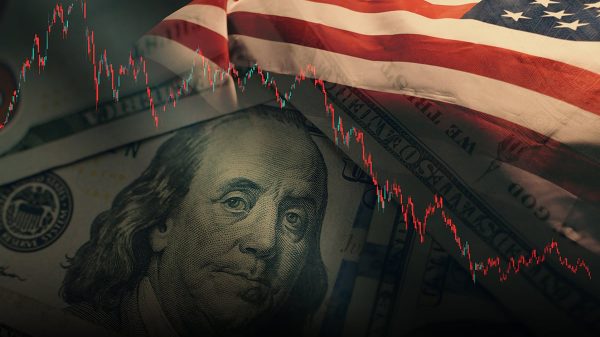
By Saqib Iqbal Ahmed and Lewis Krauskopf
NEW YORK (Reuters) – The reverberations from a blowout U.S. employment number could threaten an assortment of trades predicated on falling interest rates, if stronger-than-expected growth spurs investors to radically shift views on how much the Federal Reserve will need to cut borrowing costs in the months ahead.
Expectations of steep rate cuts spurred bets on everything from rising Treasury prices to a weaker dollar in recent months, while juicing corners of the stock market such as utilities. The Fed delivered a jumbo-sized 50 basis-point cut last month, temporarily vindicating that view.
But the trajectory of rates is less certain after Friday’s labor market report, which showed the U.S. economy creating over 100,000 more jobs than expected last month. That suggests there is less need for more large cuts this year and raises the prospects of a reversal in many of the trades that hinged on lower rates.
Futures tied to the fed funds rate on Friday showed traders had ruled out another 50 basis-point cut at the central bank’s November meeting. Market pricing on Thursday reflected a greater than 30% chance for such a cut, according to CME FedWatch.
Here is a look at some corners of the market that could be affected in a rates rethink.
DOLLAR REBOUND
Net bets on a weaker dollar stood at $12.91 billion in futures markets last week, the highest level in about a year, data from the Commodity Futures Trading Commission showed, after the dollar notched its worst quarter in nearly two years.
But the dollar shot to a seven-week high against a basket of currencies on Friday and may have more gains ahead if bearish investors are forced to unwind their bets.
“Dollar bears had unquestionably gotten too far over their skis coming into this week, and are now suffering the consequences,” Karl Schamotta, chief market strategist at payments company Corpay in Toronto.
TREASURY REVERSAL
Bets on a stronger-than-expected economy could also accelerate a recent rebound in Treasury yields. Yields on the benchmark 10-year U.S. Treasury, which move inversely to bond prices, hit a 15-month low of 3.6% in September, as investors rushed to price in rate cuts.
That move has reversed in recent days. Yields hit 3.985% on Friday, following the data, their highest level in about two months.
Zhiwei Ren, portfolio manager at Penn Mutual Asset Management, said the jobs report was a big surprise that went against “consensus and crowded trades” in the Treasury market that bet on bond prices rising as rates fell further.
HEDGE DEMAND
Expectations of economic strength could also push investors to turn their focus from options hedges to chase further stock market gains, spurring more upside in the S&P 500, according to Charlie McElligott, managing director of cross-asset strategy at Nomura.
As investors chase upside “it could quite rationally act as the fuel for the melt-up to 6,000 and beyond,” he wrote. That would constitute a gain of about 4%.
In options markets, various measures of skew – a gauge of relative demand for downside protection versus upside speculation – have remained elevated after hitting their highest levels of the year in an August stock sell-off, even as the S&P 500 recovered.
The benchmark stock index rose 0.9% on Friday and finished at 5,751.07, near a fresh high.
“The rip higher post the massive Labor data ‘beats’ tells you people don’t have ‘right tail’ on,” McElligott said, referring to the possibility of an extremely large rise in stock prices.
A countervailing force in the short term, however, may be a too-sharp rise in yields that could dim the allure of stocks compared to bonds, said Jeffrey Schulze, head of economic and market strategy at ClearBridge Investments, in a note on Friday. The 10-year yield is still about 100 basis points below where it stood a year ago.
“However, this release should be positive over the intermediate-term for risk assets generally and US equities in particular as economic growth expectations should improve on the back of today’s release,” he added.
BYE TO BOND PROXIES?
Investors may also need to rethink trades in some stock sectors that came in to favor as yields fell.
Among those are the market’s bond proxies, high dividend-paying stocks in sectors that had grown popular with income-seeking investors as yields fell. One such area, the S&P 500 utilities sector, is up 28% year-to-date, compared with a 20.6% gain for the S&P 500.
“The economy may not be in as much trouble as people were worried about, and it may not need these large rate cuts that fueled the interest in the higher-yielding areas of the market,” said Robert Pavlik, senior portfolio manager at Dakota Wealth.


























